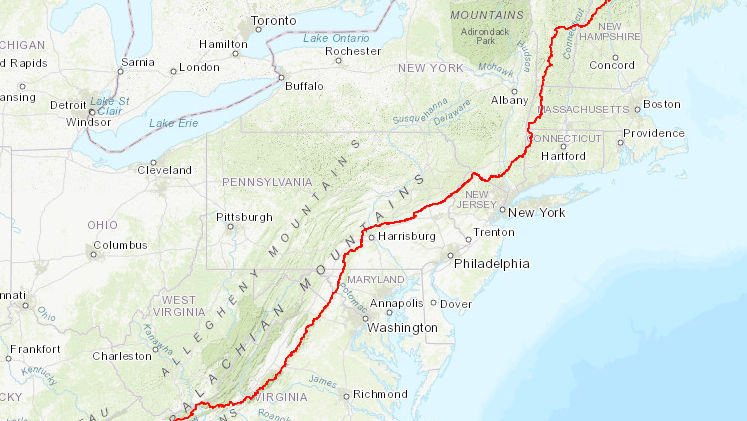Thru-Hike
Equipment and Food Resupply
Equipment
Put as much effort into determining what you don’t need as what you do. Almost all hikers learn to trim their full pack weight to 20 to 35 lbs. or less after winter gear is sent home. Those who don’t adapt and trim their pack weight often end up quitting.
What gear do you need?
 Because of the very subjective nature of equipment decisions, we do not endorse any specific brands or types of equipment, but there is a wealth of information already available to hikers looking for more information.
Because of the very subjective nature of equipment decisions, we do not endorse any specific brands or types of equipment, but there is a wealth of information already available to hikers looking for more information.
- Talk to other hikers. Past thru-hikers can offer a wealth of “lessons learned” and prospective thru-hikers might spur fresh ideas.
- Look for an outdoor store with a recent thru-hiker on staff.
- Search for books and videos and magazines to help you initially research the many choices and prices of equipment.
- Peruse online hiker forums and blogs.
In selecting your gear, keep in mind that your A.T. hike of more than 2,000 miles will, in effect, consist of a long series of shorter hikes. Resupply is frequently available; most hikers will carry only three to six days of food at a time. Except for those hiking in winter, “expedition” size packs are overkill and will tempt you to carry more than you need. Depending on when and where you start your hike, you may need winter and summer gear at different times.
If there is any item you forgot or need to change, in most areas (especially along the southern half of the A.T.) you’ll reach an outfitter along the Trail every week or two.

Maps and guidebooks
The Trail is well-marked, so many thru-hikers, who become skilled at following the blazes, choose not to carry maps. But only maps can give you a full picture of the terrain you will be hiking and, in an emergency, are your best source of information on how to describe your location or get off the Trail and find help.
Maps and guidebooks also help you get a sense of where you are and how far you’ve gone and can enrich your Trail experience.

 Special considerations for NOBOs
Special considerations for NOBOs
When you pack for your thru-hike and head off to Georgia, it’s helpful to focus on what you need for the first 30 miles, not the entire six months. In fact, there’s an outfitter just 30 miles north of Springer, which gives you the opportunity to correct any gear mistakes you’ve made.
Thru-hikers starting in Georgia in March and early April often do not have adequate equipment for the snow, ice, and single-digit temperatures they will typically encounter in the high mountains above 5,000 feet in North Carolina and Tennessee. Winter conditions can also prevail on Mt. Rogers in southwest Virginia until mid-May, so northbound thru-hikers should wait to send cold-weather home gear until after reaching that point.
 Special considerations for SOBOs
Special considerations for SOBOs
Most southbounders deal with swarms of black flies, so a headnet is a must. A wide-brimmed hat can help keep the net out of your face. Insect repellant is essential; clothing factory-treated with insect repellants can increase protection against flying pests. Tall gaiters can be helpful in keeping the mud out of shoes.
